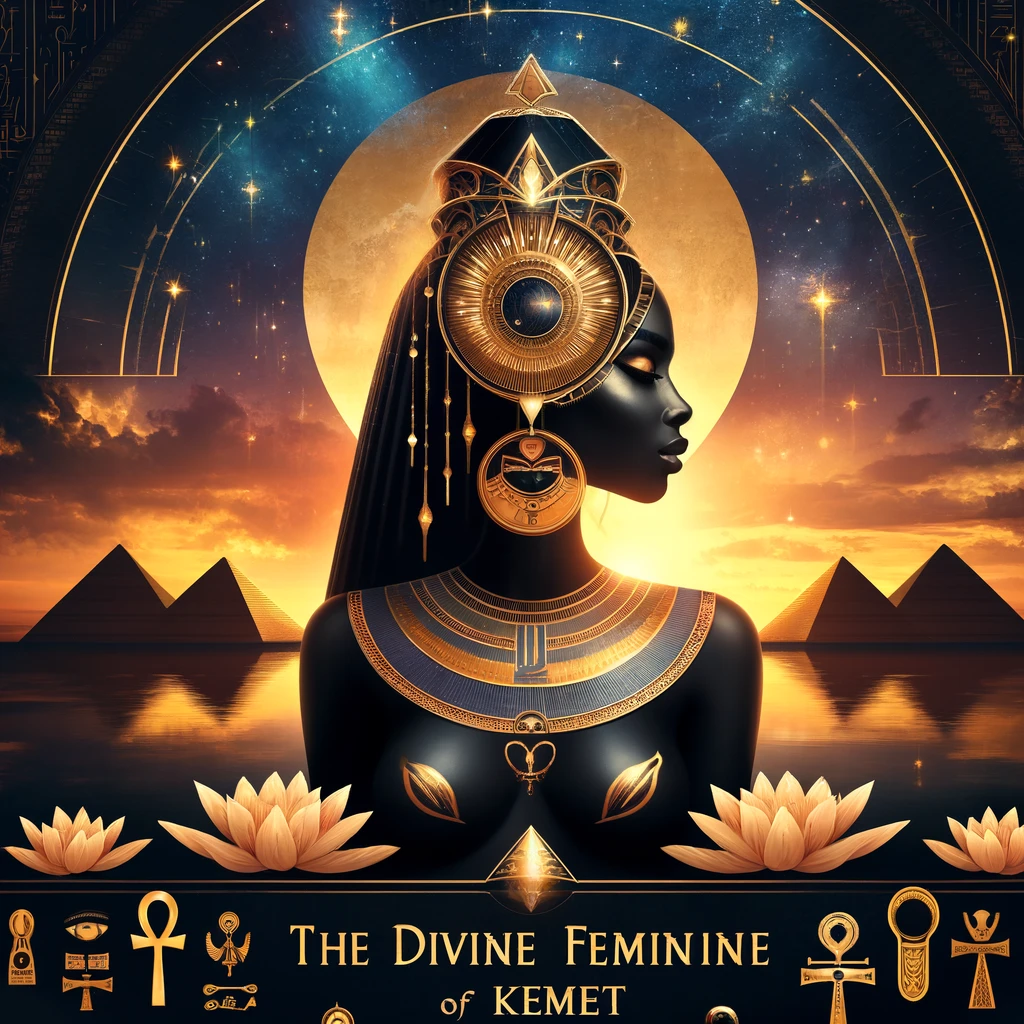Join 100,000+ Students For Free Today! Unlock the Esoteric Teachings of the Ancient World now!
100+ Esoteric Courses, Products, Videos, Livestreams and Articles All For Free!
Uncover the Mystery School Teachings of Kemet and Ancient Egypt. Start Your Journey with Kemetic University Today!

Membership
KEMETIC UNIVERSITY - Ancient Egypt Mystery School
Kemetic Teachings & Ancient Egypt Mystery School Courses Become a student and Tap into the library of Ancient Esoteric Courses today!
More than 700,000+ Followers, 1000+ Students! Access 50+ courses today!
Elevate Your Celestial Consciousness,

Oracle - Monthly Membership
Access to all courses, Community, Articles with this montly membership
- 31 days of subscription
- Unlimited Subscribes

Lifetime Access
Everything that is included in the Advanced list, but also you will get a discount on a personal coach, who will help you with studying during the educational period.
- 10000 days of subscription
- Unlimited Subscribes

High Priest/ Priestess - Yearly membership
Access to all courses, Community, articles And more with the yearly membership
- 365 days of subscription
- Unlimited Subscribes
Events
Upcoming Events to Feed Your Brain
Tartaria Tour
Explore the Lost Empire of Tartaria – A Once-in-a-Lifetime Guided Tour 📅 Date: August 30, 2025 | ⏳ Duration: 7 Days 📍 Location: 4 Countries Across Europe 💰 Price: €5,999 (Includes Accommodation, Transport & Entry Fees) Have you ever felt that history as we know it is incomplete? That the grand architecture, the hidden symbols, and the erased narratives point to a civilization that has been intentionally obscured? This exclusive Tartaria Expedition is your chance to uncover the hidden empire that has been in plain sight all along. Join us for a 7-day immersive journey through Europe’s most mysterious and awe-inspiring ancient Tartarian sites, where you will witness firsthand the remnants of a lost civilization. With a specialist guide, you’ll explore locations that defy conventional history and reveal the advanced knowledge, architecture, and legacy of the Tartarian Empire. What to Expect on This Unparalleled Journey ✅ Visit Enigmatic Tartarian Sites across four European countries, each location carefully selected for its historical and architectural significance. ✅ Stay in a Restored Tartarian Building that has been transformed into a luxury hotel, allowing you to experience the energy and grandeur of this lost civilization firsthand. ✅ Guided Deep Dives into Suppressed History, unveiling the symbols, structures, and advanced knowledge left behind by the Tartarians. ✅ Travel in Comfort with all accommodations, local transportation, and entry fees included once you arrive. ✅ Exclusive Access to Hidden Locations and insights that are not covered in mainstream history books. This is not just a trip—it’s an awakening. A journey beyond the veil, where you’ll witness the undeniable proof of an erased empire and understand how Tartaria’s legacy still surrounds us today. Limited Availability – Secure Your Spot Now! Due to the exclusivity and depth of this tour, spaces are extremely limited. Once your ticket is purchased, you will receive the full itinerary, location details, and schedule for this extraordinary adventure. 🔗 Reserve Your Spot Today for €5,999 and be among the few who dare to uncover the real history of the world. History is written by the victors now it’s time to see the truth with your own eyes. Will you be one of the chosen few to rediscover the secrets of Tartaria?
Hair as Antennas of the Body – Unlocking Energetic and Divine Connections
Hair as Antennas
The 101 ancient Herbs Recipe and Guide
101 Ancient Herbs: Unlocking the Lost Wisdom of Natural Healing – FREE for You! For centuries, our ancestors relied on the incredible power of herbs to heal the body, mind, and spirit. From the sacred temples of Kemet to the wisdom of indigenous healers across the world, herbal medicine has been the foundation of holistic health and wellness. Yet, much of this knowledge has been hidden, forgotten, or overshadowed by modern pharmaceuticals.
Courses
Kemetic University and Mystery School!
Kemetic University - The Mystery School: Imagine standing amidst the enigmatic ruins of ancient Egypt, where the great pyramids whisper secrets to those who dare to listen, and where luminaries of history, including Moses, Jesus, Pythagoras, and Plato, sought enlightenment. Today, the digital portal Kemetic.app invites you to unlock the doors of history, peer into the hallowed halls of the Kemetic Mystery Schools, and experience the revival of this ancient esoteric knowledge at Kemetic University and Mystery School..
In the age-old sands of Egypt, beneath the watchful gaze of the pyramids, and amidst the echoes of a distant past, the Kemetic Mystery Schools thrived. These ancient institutions were repositories of profound wisdom, nurturing seekers on a quest for enlightenment and self-realization. Today, in the digital age, Kemetic.app has embarked on a remarkable journey to resurrect and share this sacred knowledge through Kemetic University and Mystery School, bridging the gap between ancient wisdom and modern seekers.
NEW!
Kemetic Courses - Mystery School Teachings!
Chakra Mastery: Unlocking Your Energy Centers for Personal and Spiritual Growth
in Awareness CoursesEmbarking on a Plant-Based Journey: Transitioning to a Vegan Lifestyle Course
in Health & FitnessLatest bundles
Latest bundles subtitle
Popular Courses
Dive into these Ancient Teaching
The Divine Feminine: 30 Ancient Goddesses of Kemet ancient Egypt | Full Course
in SacredStore Products
Explore physical & virtual products
The Kemetic University Experience
Are you interested to be a part of our community? You can be a part of our community by signing up as an instructor or organization.
- Thoth's Wisdom: At Kemetic University, students delve deep into the teachings of Thoth. This includes exploring the mysteries of the universe, sacred geometry, mathematics, and the profound interconnectedness of all things.
- Initiation and Transformation: Modern initiates at Kemetic University undergo a series of transformative experiences, guided by seasoned mentors. These initiations aim to awaken higher states of consciousness and self-realization.
- Secrecy and Symbolism: The teachings at Kemetic University embrace symbolism and sacred geometry to convey hidden truths, mirroring the methods of the ancient Kemetic Mystery Schools. Online Accessibility In recognition of the digital age, Kemetic University offers its courses online, transcending geographical boundaries and making the ancient wisdom accessible to seekers worldwide.
Through this virtual platform, individuals can embark on a profound journey of self-discovery. A Supportive Community Kemetic University nurtures a vibrant community of like-minded individuals who share a common quest for wisdom and enlightenment. This supportive network provides opportunities for growth, discussion, and the exchange of insights..






Become our Brand Ambassadors
Transform People's Life with Consciousness Courses and Earn while doing it! hare your unique link on Socialmedia, Whatsapp, Blog, Videos and Get paid!
Student Reviews
Trusted by 1000+ students, 50+ Viral videos on Tiktok, Youtube And Facebook, And 700K+ Followers!
.jpg)
Ryan Newman
Wisdom seekerGreat courses!
Organizations
#Greatest education organizations are here to help you
Articles
Explore latest news and articles
 12/03/2025
12/03/2025
 24/10/2024
24/10/2024
The Ultimate Guide to Survival: Building Your Essential Survival Kit
 3/02/2025
3/02/2025
The Tartarian Orphan Trains and French Macron Family
We use cookies to improve your experience. By continuing to use this site, you accept our Cookie Policy.





























